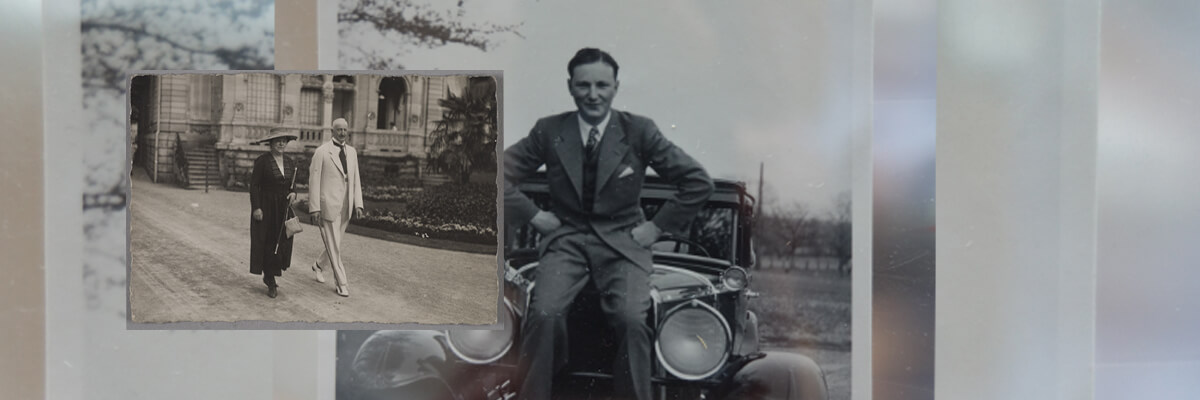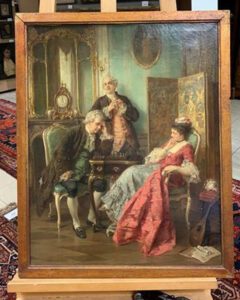Today, we remember Dr. Max Stern, art historian and art dealer, born in Mönchengladbach on April 18th 1904 (d. 1987), and his father, textile industrialist turned art dealer and auctioneer, Julius Stern, born on April 18th 1867 in Anröchte (d. 1934). Father and son shared the same birthday.
Today, we are clarifying and contextualizing the business history of the Galerie Stern in Düsseldorf, forced to close in 1937 because the owner was of Jewish origin. Much of our activity focusses on establishing provenances for works of art associated with the gallery. In doing so, we address questions of collective memory as well as specific objects that are preserved in museums, private hands, or that circulate in the market. Again and again, we encounter processes of forced sales in response to persecution and oppression by the national socialist regime.
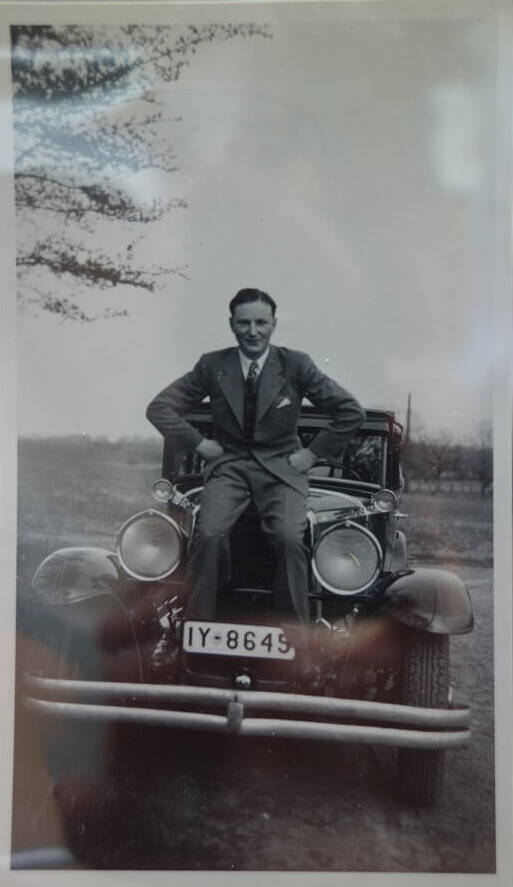
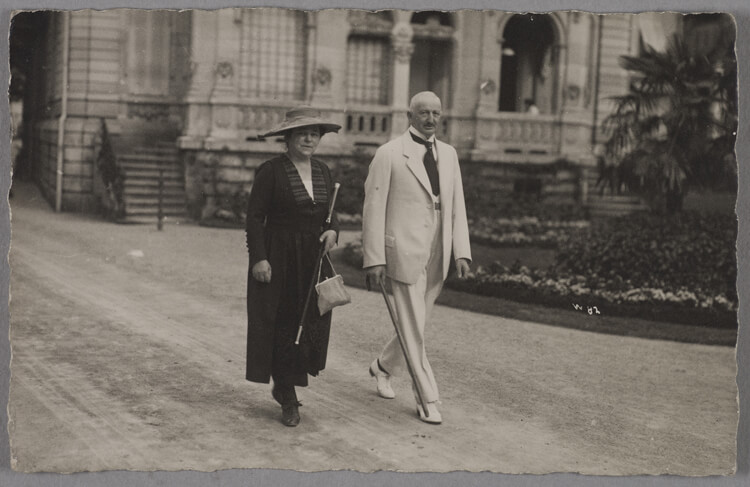
This year´s double birthday of Max and Julius Stern is not without good news since the team of the Stern Cooperation Project (SCP) has received funding for another year from the German Lost Art Foundation. It is also worth mentioning that, due to the generous support of Mr. Frank Hargesheimer, two donations to the heirs of Max Stern could be facilitated last month. Two objects had been identified by the SCP team in an upcoming auction at Hargesheimer Kunstauktionen Düsseldorf.
A key element in this success story was the open dialogue regarding the back of the paintings, since marks and labels are eloquent witnesses of the past:
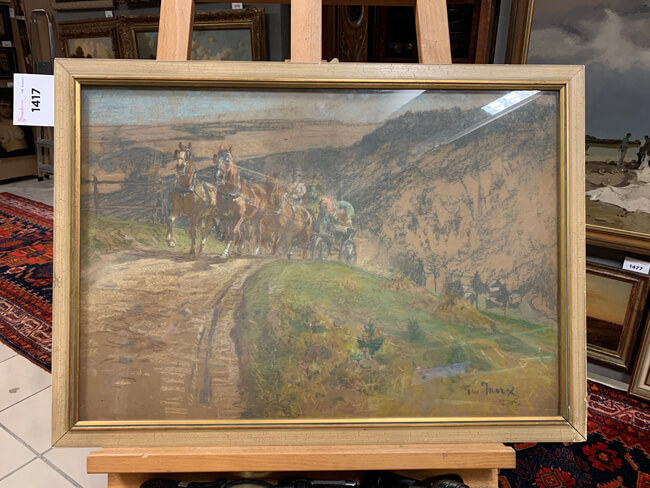
![Ein abgenutztes Stück Papier mit einer großen aufgedruckten 90 und einem kurzen Text, der durch die Abnutzungen allerdings nicht mehr lesbar ist. Zu entziffern ist nur noch "Die aufbewahrten Gegenstände [...]".](https://www.zispotlight.de/wp-content/uploads/2021/04/650_Gustav_Marx_Spazierfahrt_Detail_90_verso_Hargesheimer.jpg)
Julius Stern had placed this artwork in his auction of January 23rd 1932 as lot number 90, exactly the information recorded on the back of the object. The auction catalogue did not include an image but the description was very precise: „Gustav Marx, Spazierfahrt. Vier braune Pferde ziehen einen Landauer eine Bergstraße hinan. Die beiden vorderen Tiere haben schon den höchsten Punkt erreicht. Auf dem Bock ein Kutscher in brauner Livree, daneben ein Mädchen, im Wagen drei Damen mit rotem und grauem Sonnenschirm. Blauer Himmel. Bezeichnet: Gust. Marx. Ddf. Pastell. H. 49, B. 70.“. Mr. Hargesheimer had offered this artwork for an estimated price of 150,- €. Even though this auction took place a year before the Nazi rise to power, Mr. Hargesheimer reimbursed the consignor and donated this work to the Max and Iris Stern Foundation in Montréal. For me – a provenance researcher who has been active in the field for almost two decades – such a voluntary transfer is quite unique.
The second painting, oil on canvas, 69 x 56 cm, is an intimate scene of three figures playing chess. The title Ein schwieriger Zug puts some drama into the scene that depicts a male player thinking, his head resting on his hand, while his chess partner, the lady in elegant dress, looks rather amused in her relaxed pose, as if she has already won the game. The painting is signed and dated on the lower left „O. Erdmann Df. (18)76“. Mr. Hargesheimer offered it in his auction for an estimated price of 1.800,- €.
We were able to identify it as a painting offered by the Galerie Stern in June 1935. In the Stern exhibition catalogue the following information had been provided: „Otto Erdmann, Die Schachspieler. Alter Herr und junge Dame. Ein daneben stehender junger Mann gibt der letzteren durch Fingersprache ein Zeichen.“ Bezeichnet: O. Erdmann, Ddf. 76. Leinwand. H. 68,5, B. 55,5. An additional reference to an image provided by Max Stern in the provenance for the painting was the ultimate puzzle piece we needed to confirm the identity: „Abgebildet in ‚Ueber Land und Meer‘ 1880 (>>).
Again, Mr. Hargesheimer reimbursed the consignor and donated the artwork to the heirs of Max Stern. Already in November 2018, the Düsseldorf auction house had donated „Schiffbruch vor den Klippen“ by Johannes Hermanus Koekkoek after he had learned from the SCP that the Max Stern Art Restitution Project (MSARP) had claims to the painting. He then restituted it accordingly (>>).
During a year in which we have all faced serious challenges, the members of the SCP would like to thank Mr. Hargesheimer for his willingness for cooperation and for his laudable and honorable gesture. Based in the former home town of the Stern family, he recently stated: “For me, this was the only right way from the beginning. Not only I, but I also speak on behalf of my wife and the entire multinational staff, bear with this small contribution responsibility for this historic crime.”
Dr. Clarence Epstein, Executive Director, Max Stern Art Restitution Project and representative of the heirs to Max Stern, responded by saying: “In the twenty years that we have been pursuing Max Stern’s losses, Frank Hargesheimer stands out as one of the most cooperative members of the art trade in Germany. We are grateful for his exemplary efforts in facilitating the return of these two works.”
We remember. Happy birthday Dr. Max Stern and Julius Stern.

ANNE UHRLANDT, M.A., project coordinator, ZI on behalf of the
STERN COOPERATION TEAM (f.l.t.r): Elina Meßfeldt, B.A., assistant, ZI | Dr. Evgeniya Makarova, research fellow Canada, Montréal | Anne Uhrlandt, M.A., project coordinator, ZI | Prof. Dr. Catherine MacKenzie, Canadian supervisor, Montréal | Dr. Noah Benninga, research fellow Israel, Jerusalem | Philip Dombowsky, expert, National Gallery of Canada, Ottawa | Prof. Dr. Christian Fuhrmeister, supervisor, ZI | Dr. Stephan Klingen, supervisor, ZI
Cosima Dollansky über Kunsthandel und Filmkunst: Wenn Handelsware zur Requisite wird
Kunsthandelsquellen wie die Karteikarten und Fotomappen der Kunsthandlung Julius Böhler in München und der Kunsthandel…
Ein Blick in das Archiv Böhler: Katharina Roßmy über einen Wandteppich aus Berlin, eine Puppenmacherin aus Hollywood und eine Gastronomen-Familie aus Breslau
Was auf den ersten Blick wie eine normale Kommissionskarte mit unverfänglichen Provenienzangaben aussieht, verbindet letztlich…
Kunsthandelsquellen des Zentralinstituts für Kunstgeschichte ermöglichen Restitutionen an die Nachfahren des Antiquars Jacques Rosenthal
Franziska Eschenbach Für die Provenienzforschung ist schon lange klar: Auktionskataloge bieten wichtige Hinweise, um die…
Anna-Lena Lang über das tragische Ende der Kunst- und Antiquitätenhandlung H. Bauml
Die Karteikarten der Kunsthandlung Julius Böhler verraten nicht nur viel über den deutschen und europäischen…
Theresa Sepp über eine Diplomatensammlung und koloniale Kontexte
Im Zentrum der Erforschung des Archivs der Kunsthandlung Julius Böhler steht die Klärung von Provenienzen…
Theresa Sepp über „Schöner Wohnen“ am Prinzregentenplatz
Das Karteiensystem der Kunsthandlung Julius Böhler war nicht dafür gedacht, für Außenstehende auf Anhieb verständlich…
Birgit Jooss über ein Butterbrot für die Neue Pinakothek
Ein goldgerahmtes Gemälde mit dem lapidaren Titel Butterbrot erreichte am 30.7.1929 aus Berlin die renommierte,…

